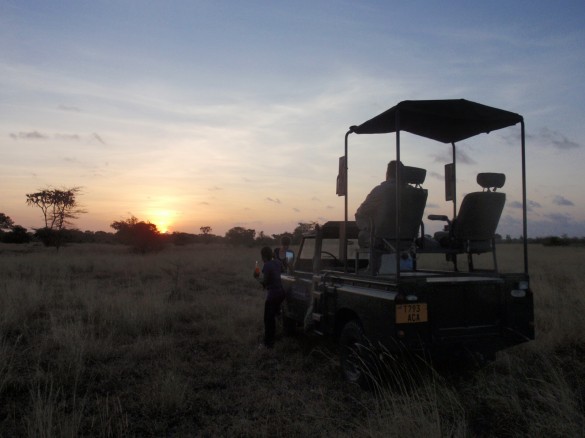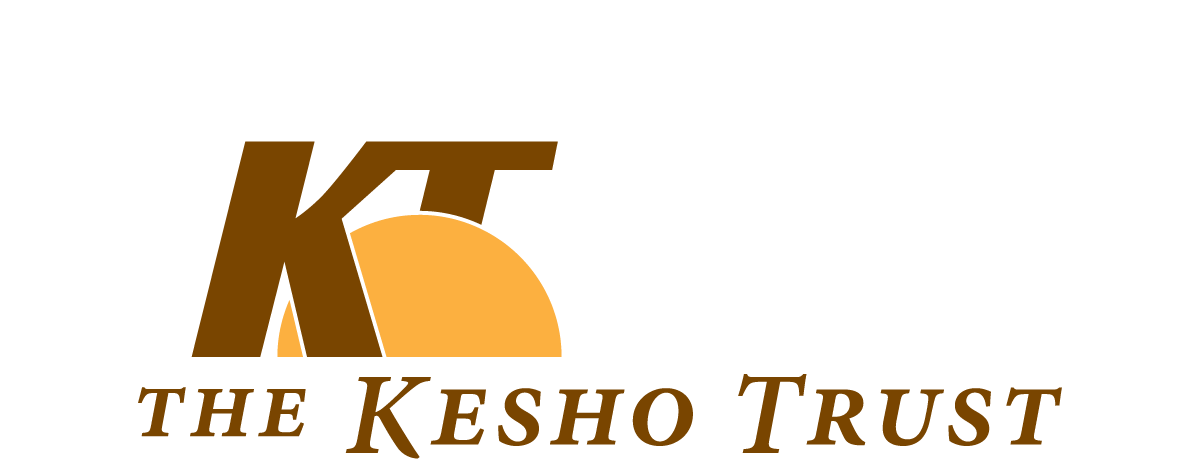I decided to volunteer for the Kesho Trust for several reasons. First and foremost, I had recently finished a Bachelor of Arts degree in International Development and was slowly realizing just how useful a BA really is (not very useful at all, as it turns out). Then there was the project itself. The Protected Areas and Poverty Reduction (PAPR) initiative interested me because of its focus on community involvement and community ownership. I liked that the projects were driven by committee members from the communities the research was focused on. In my opinion, research projects that take place in “developing” countries often occur with little thought to how community members feel about the project or how they can benefit from it. In this sense, the PAPR was of interest to me in that the project stems from communities’ interests and needs.

Kiri helping with a beach clean-up in Saadani village
When I arrived in Tanzania, the PAPR project was roughly at a half-way point. Research committees had been set up in three communities in Saadani National Park, including the villages of Saadani, Matipwili and Mkwaja. Each of the committees identified an issue related to conservation and poverty that they thought was most relevant to their context. While there is a lot of overlap in the issues that these communities face, each committee identified a separate issue, ranging from beach pollution to human-animal conflicts causing crop destruction to over-fishing. During the four month period that I was there, we worked with the committee members to start the process of data collection. The purpose of doing so is to have a better understanding of the problems that we are looking at. Eventually the committee members will decide what they want to do with this information, such as approaching decision-makers or starting an education campaign in the community. At this point, having data to support whatever action is taken will be an important step.

beach clean-up in Saadani Village
My role in the project was primarily to act as a resource for the committee members in their research work. I realize this description is a little vague, but I think it’s useful in covering the wide range of activities I was involved in while I was in Tanzania. I split my time between Dar es Salaam, a bustling coastal city, and Saadani National Park. Both the work I did and the way I lived changed drastically when I went from Dar es Salaam to Saadani village. In Dar, I worked out of an air conditioned office and met with various government and NGO stakeholders. In Saadani, I went between three villages on the back of a motorcycle and met with committee members and community representatives (definitely no air conditioning involved). The stark contrast between my life in Dar and how I lived in Saadani took a bit of adjusting, but I loved spending time in both places. In Dar I got to meet with NGO staff members that have been working in their field for decades, yet still manage to have passion for what they are doing. In Saadani I got to hear how the committee members were doing on their own research work, their challenges and successes. The most exciting times for me was hearing the committees bring together ideas on what they wanted to do with the information they’re gathering and how best to go about doing it.

sunset in Saadani National Park
I feel incredibly fortunate to have been able to spend time in Tanzania with the Kesho Trust. I worked with some truly amazing people on a project I felt both interested and invested in. There were without a doubt days where I felt frustrated and exhausted with transportation woes, delayed meetings, miscommunication, language barriers, etc. But when I look back and reflect on my time in Tanzania, these frustrations fade into the background. Instead I remember seeing a group of over 30 students helping to pick up garbage from the beach, seeing a herd of giraffes on my way to a meeting, having my co-workers try to teach me Swahili. These memories may be the romanticized version of what I did in Tanzania, but they keep me wanting to go back. I do hope to go back to Tanzania someday soon, if only to brush up on my Swahili.

Evaline (volunteer for the Kesho Trust) and Ally (project coordinator of the PAPR initiative) at Saadani Safari Lodge
